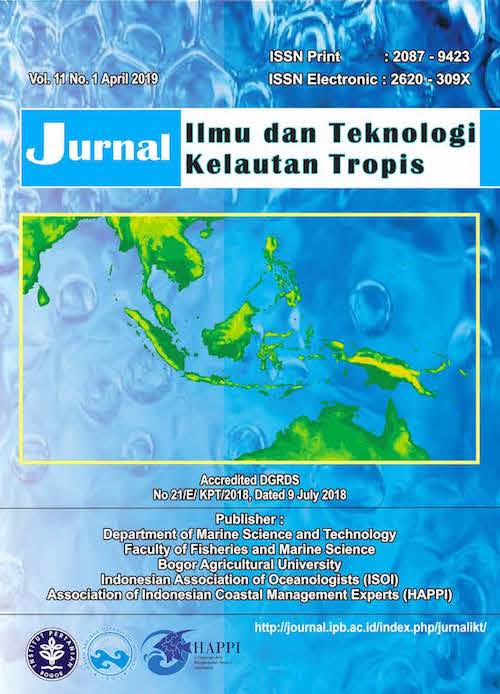THE MODEL OF MACRO DEBRIS TRANSPORT BEFORE RECLAMATION AND IN EXISTING CONDITION IN JAKARTA BAY
Abstract
Jakarta Bay as one of an area with the densest population in Indonesia became one of the highest contamination level waters in the world includes pollution of debris. Reclamation activities in Jakarta Bay will change the water conditions, and will also affect the distribution of debris at sea. Therefore, this study conducted is to determine the movement of the marine macro debris before and on the condition of the existing reclamation island in the Bay of Jakarta. The method used is simulated by the hydrodynamic model and particle trajectory models using MIKE software. Data needed for the hydrodynamic model, namely wind, tides, bathymetry, and shoreline, while for the trajectory of the particles using a data type of debris, marine macro debris weight, and debris flux. The analysis was performed for hydrodynamic model simulation results and comparison of particle trajectory models. Hydrodynamics simulations indicate if a reclamation island formation does not change significantly in the offshore area, but a simple change in the surface current pattern of the reclamation area, it also causes a decrease in the flow velocity of ± 0.002 to 0.02 m/s at some point. Macro debris particle trajectory simulation shows if after reclamation, macro debris tends to accumulate in the eastern Jakarta Bay in the rainy season (January), as well as in the western and eastern regions during the dry season (July).
Authors
The author submitting the manuscript must understand and agree that the copyright of the article manuscript must be submitted/transferred to the Jurnal Ilmu dan Teknologi Kelautan Tropis. This work is licensed under the Creative Commons Attribution-ShareAlike 4.0 (CC BY-SA) International License in which the Author and Reader can copy and redistribute the material in any media or format, and remix, modify and build material for any purpose, but they must provide appropriate credit (citing articles or content), provide a link to the license, and indicate whether there is a change. If you mix, change, or create material, you must distribute your contribution under the same license as the original.

